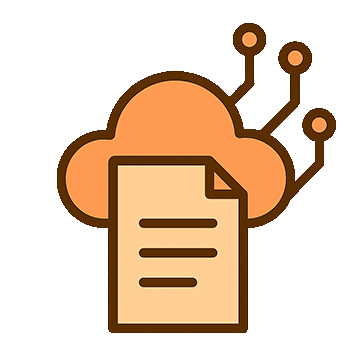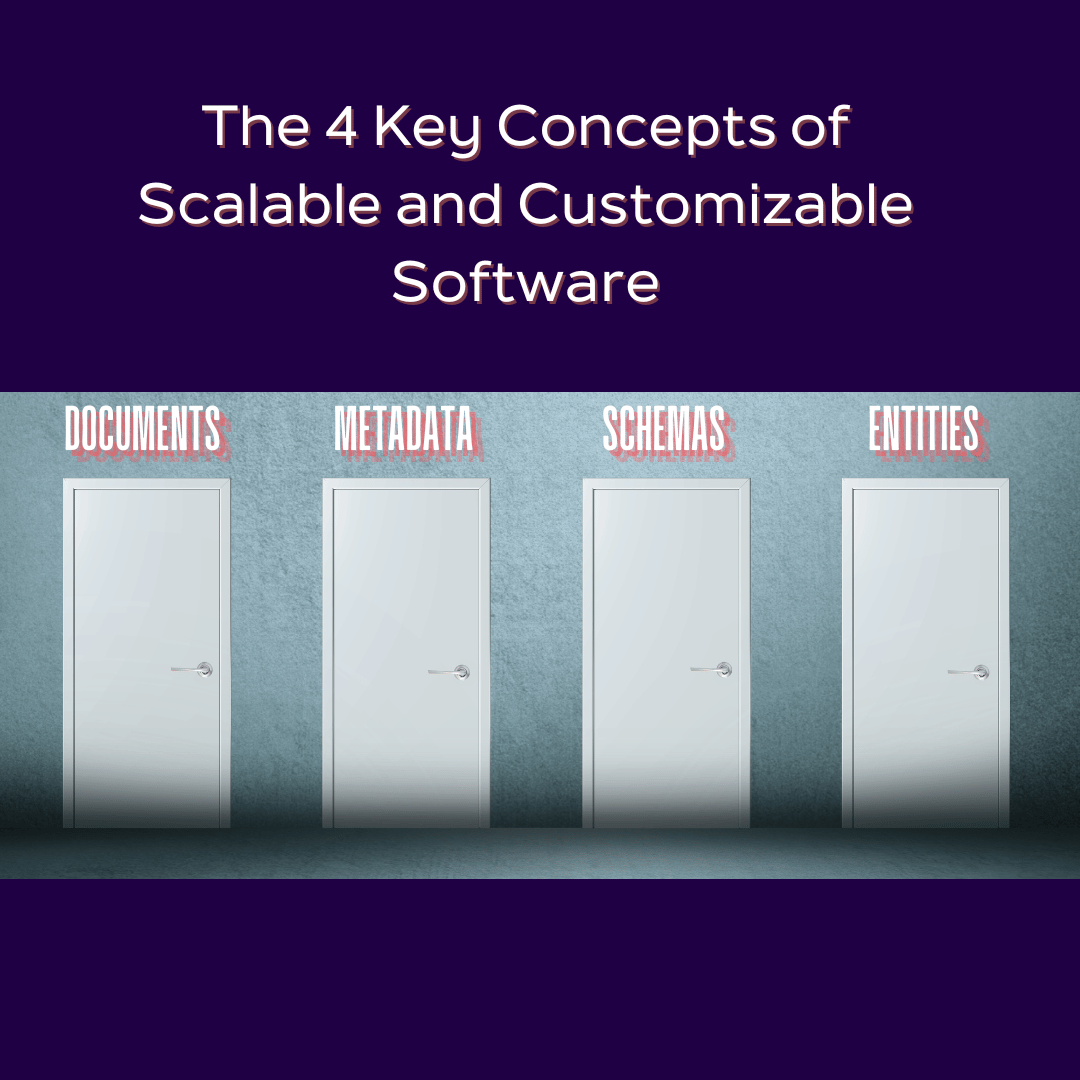Introduction
With the release of version 1.15.0, FormKiQ has taken a significant leap forward in providing a comprehensive backend for information-focused software applications. What began as a tool to manage JSON data and document attachments has evolved into a powerful, flexible document management platform capable of serving as the foundation for a wide range of software solutions.
The Evolution of FormKiQ
FormKiQ's journey started with a simple yet powerful idea: to provide a scalable solution for handling form data. As we delved deeper into the architecture, we realized that we were essentially dealing with two types of documents: JSON files and file object attachments. This insight led us to reimagine FormKiQ as a comprehensive document management system.
As we developed the platform, we recognized that effective document management goes beyond just storing files. It requires robust metadata handling, including the ability to define and validate metadata structures. This realization guided the expansion of FormKiQ's capabilities.
The Four Key Concepts of FormKiQ
FormKiQ's architecture is built around four key concepts:
- Documents: The central unit in FormKiQ, encompassing both JSON data and file attachments.
- Metadata: Information about documents, including both standard and custom attributes.
- Schemas: Structures that define and validate metadata requirements for documents.
- Entities: Collections of metadata that extend FormKiQ's capabilities beyond simple document management.
The introduction of entities marked a significant expansion in FormKiQ's functionality. Entities enable advanced features like workflows, attribute-based access control, and intelligent document processing. They can be pre-defined (standard) or custom-created, leveraging attributes and schemas to manage complex relationships and processes.
Flexibility: The Core of FormKiQ's Design
FormKiQ's architecture is built with flexibility at its core. This design philosophy allows the platform to adapt to a wide range of use cases, from simple document storage to complex, multi-entity systems. Let's explore how this flexibility manifests in practice.
Case Study: Company and Contract Management
Consider a system for managing companies and contracts. In this scenario:
- Internal documents belong to your company
- Customer documents belong to the customer's company
- Vendor documents belong to the vendor's company
- Business units can be represented as sub-companies
- Contracts can be associated with specific companies or business units
FormKiQ's flexible entity and attribute system can easily model this complex relationship structure. Companies, business units, and contracts can be represented as entities, while documents are associated with these entities through attributes and schemas.
Scalability Across Business Sizes
One of FormKiQ's key strengths is its ability to scale from small business needs to enterprise-level complexities. Let's look at how FormKiQ can handle an invoice generation use case for different business sizes:
Small and Medium-sized Businesses (SMBs)
An SMB-focused application might use a simple structure:
- Create a 'Company' entity
- Apply a site-level document schema requiring all documents to be associated with a Company entity
- Use basic attributes for invoice details (date, amount, status, etc.)
Large Multinational Corporations (MNCs)
An MNC-focused application might employ a more complex structure:
- Create 'Company', 'BusinessUnit', and 'Contract' entities
- Apply a classification schema to documents, allowing different requirements based on document type
- Use advanced attributes for multi-currency support, inter-company transactions, etc.
- Implement workflow entities for approval processes
In both cases, FormKiQ's API can be used to build the application with minimal backend coding, allowing developers to focus on creating great user experiences.
FormKiQ as a Platform
FormKiQ isn't just a product; it's a platform. This distinction is crucial in understanding its capabilities and potential applications. While many platforms focus either on providing comprehensive but narrow solutions or broad but shallow capabilities, FormKiQ aims to offer both depth and breadth.
This approach allows FormKiQ to serve a wide range of industries and use cases while still providing the deep functionality needed for complex document management scenarios. Whether you're building a simple document storage system or a complex, multi-entity business process management solution, FormKiQ provides the tools and flexibility to meet your needs.
Rethinking API Design for Flexibility
FormKiQ's commitment to flexibility extends to its API design. Many traditional APIs use fixed query string parameters for filtering and searching (e.g., "GET /contracts?status=active"). While this approach is intuitive, it can limit flexibility as system requirements evolve.
Instead, FormKiQ treats elements like status as customizable attributes. This approach allows for:
- Different status sets for various entity types (e.g., separate statuses for cases and tasks)
- Flexible attribute searching
- Enhanced workflow conditions
- More granular access control
This flexibility in API design ensures that FormKiQ can adapt to changing business needs without requiring significant backend modifications.
Is FormKiQ Right for Every Use Case?
While FormKiQ's flexibility makes it suitable for a wide range of applications, it may not be the optimal choice for every scenario. Here are some considerations:
- Development Speed: For projects where rapid development is more critical than scalability, a more traditional, opinionated framework might be faster to work with initially.
- Gradual Adoption: Some teams might prefer to start with FormKiQ's core document management functionality and gradually expand its use as they become more familiar with the platform.
- Hybrid Approaches: FormKiQ can be used as a document layer in conjunction with other solutions for different aspects of the data layer, allowing for a best-of-breed approach.
Conclusion
FormKiQ's latest release represents a significant step forward in document management and application development. By providing a flexible, scalable platform that can adapt to a wide range of business needs, FormKiQ empowers developers to build sophisticated, information-focused applications with minimal backend coding.
Whether you're managing documents for a small business or developing a complex, multi-entity system for a global corporation, FormKiQ offers the tools and flexibility to meet your needs. As we continue to evolve and expand FormKiQ's capabilities, we remain committed to our core principles of flexibility, scalability, and empowering developers to create powerful, efficient applications.
If you would like to learn more about how FormKiQ's platform can fit your needs, please
reach out and let us know.
 LATEST: The Complete Guide to Cloud Document Management: Why Architecture Matters Cloud-native vs. cloud-hosted: why architecture determines cost, compliance, and capabilities
LATEST: The Complete Guide to Cloud Document Management: Why Architecture Matters Cloud-native vs. cloud-hosted: why architecture determines cost, compliance, and capabilities FormKiQ vs. Off-the-Shelf Software and Less Flexible SaaS When is FormKiQ a better choice than Off-the-Shelf Software and Less Flexible SaaS?
FormKiQ vs. Off-the-Shelf Software and Less Flexible SaaS When is FormKiQ a better choice than Off-the-Shelf Software and Less Flexible SaaS? FormKiQ vs. Building It Yourself How does FormKiQ save time over custom in-house solutions?
FormKiQ vs. Building It Yourself How does FormKiQ save time over custom in-house solutions? Use Cases FormKiQ works for small and large workflows, across all verticals and industries.
Use Cases FormKiQ works for small and large workflows, across all verticals and industries. FormKiQ For Teams Find out how FormKiQ can work for your team
FormKiQ For Teams Find out how FormKiQ can work for your team FormKiQ For Industries Discover the advantages FormKiQ can bring to your industry
FormKiQ For Industries Discover the advantages FormKiQ can bring to your industry Blockchain and Decentralized Storage Leverage web3 technologies including proof of work and distributed systems for document control and data privacy
Blockchain and Decentralized Storage Leverage web3 technologies including proof of work and distributed systems for document control and data privacy Content and Digital Asset Management Integrate with your preferred web content management system while leveraging FormKiQ for managing your digital assets
Content and Digital Asset Management Integrate with your preferred web content management system while leveraging FormKiQ for managing your digital assets Document Management Module Integrate all of the required functionality of a document management system into an existing software solution
Document Management Module Integrate all of the required functionality of a document management system into an existing software solution Integration with QMS or LIMS Add missing functionality for your Quality Management or Laboratory Information Management by integrating with FormKiQ
Integration with QMS or LIMS Add missing functionality for your Quality Management or Laboratory Information Management by integrating with FormKiQ Job Application Form Receive applications, including cover letter and resume attachments, and import into an existing HR Management System
Job Application Form Receive applications, including cover letter and resume attachments, and import into an existing HR Management System Legal Discovery Tool Find information quickly by combining full-text search with AI-powered document classification
Legal Discovery Tool Find information quickly by combining full-text search with AI-powered document classification The Paperless Office: Digital Document Processing Collect, process, and store paper and digital documents, allowing for archival, integration, and future recall
The Paperless Office: Digital Document Processing Collect, process, and store paper and digital documents, allowing for archival, integration, and future recall Product Leasing System Process client lease applications, including a credit check and approval workflow
Product Leasing System Process client lease applications, including a credit check and approval workflow Company-Wide Break down the silos in your organization with a centralized control center for documents, ready for integration with any and all systems
Company-Wide Break down the silos in your organization with a centralized control center for documents, ready for integration with any and all systems Engineering and Product Reduce development time and agony with battle-tested components for your applications
Engineering and Product Reduce development time and agony with battle-tested components for your applications Finance and Accounting Process paper and electronic invoices and receipts, ready for integration with your important systems
Finance and Accounting Process paper and electronic invoices and receipts, ready for integration with your important systems HR and Recruiting Build and support your people across the organization by integrating with your essential tools
HR and Recruiting Build and support your people across the organization by integrating with your essential tools IT and InfoSec Provision a secure document store with the encryption and controls needed for compliance and protection
IT and InfoSec Provision a secure document store with the encryption and controls needed for compliance and protection Legal Manage and safeguard contracts and other essential documents across systems
Legal Manage and safeguard contracts and other essential documents across systems Marketing Add better discovery and reliability to digital assets and other essential content, while enabling integration with a web content management system
Marketing Add better discovery and reliability to digital assets and other essential content, while enabling integration with a web content management system Sales Keep track of sales assets and contracts inside and outside of your CRM and other tools
Sales Keep track of sales assets and contracts inside and outside of your CRM and other tools Accounting, Financial Services, and FinTech Standardize financial documents, metadata, and workflows across systems, teams, auditors, and clients
Accounting, Financial Services, and FinTech Standardize financial documents, metadata, and workflows across systems, teams, auditors, and clients Education, Training, and EdTech Integrate Learning Management Systems with other essential applications and tools
Education, Training, and EdTech Integrate Learning Management Systems with other essential applications and tools Healthcare, Life Sciences, and MedTech Combine secure and compliant records management with laboratory information management systems
Healthcare, Life Sciences, and MedTech Combine secure and compliant records management with laboratory information management systems Law Practices and Legal Services Ensure efficient legal discovery and case management
Law Practices and Legal Services Ensure efficient legal discovery and case management Logistics and Transportation Provide a robust and customized solution for fleet management or other logistics needs
Logistics and Transportation Provide a robust and customized solution for fleet management or other logistics needs Manufacturing, Production, and Utilities Control and distribute essential documents and standard operating procedures within and between facilities, partners, and clients
Manufacturing, Production, and Utilities Control and distribute essential documents and standard operating procedures within and between facilities, partners, and clients Online Entertainment, Gaming, and Gambling Provide the required compliance documents to partners, customers, and government agencies
Online Entertainment, Gaming, and Gambling Provide the required compliance documents to partners, customers, and government agencies Professional and Technical Services Ensure that clients, inspectors, and subcontractors are aligned with consistent document control
Professional and Technical Services Ensure that clients, inspectors, and subcontractors are aligned with consistent document control Tech Startups Build robust document management functionality into your disruptive product
Tech Startups Build robust document management functionality into your disruptive product








